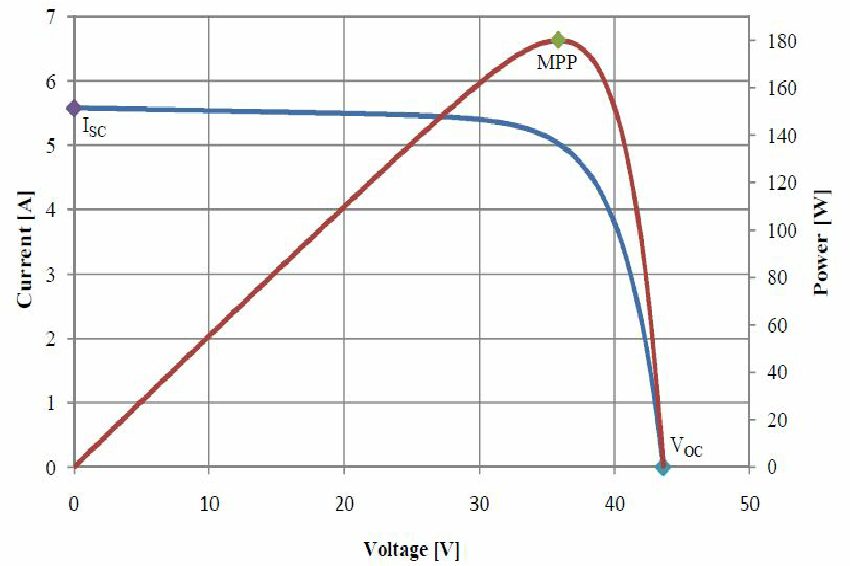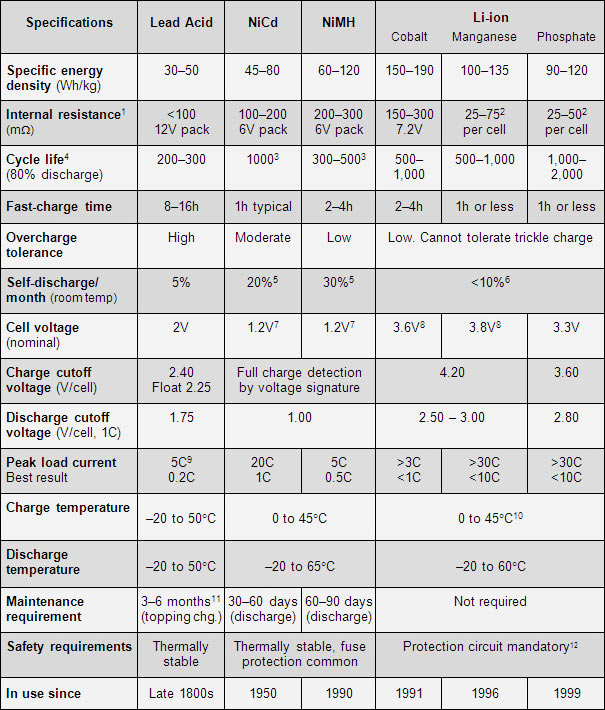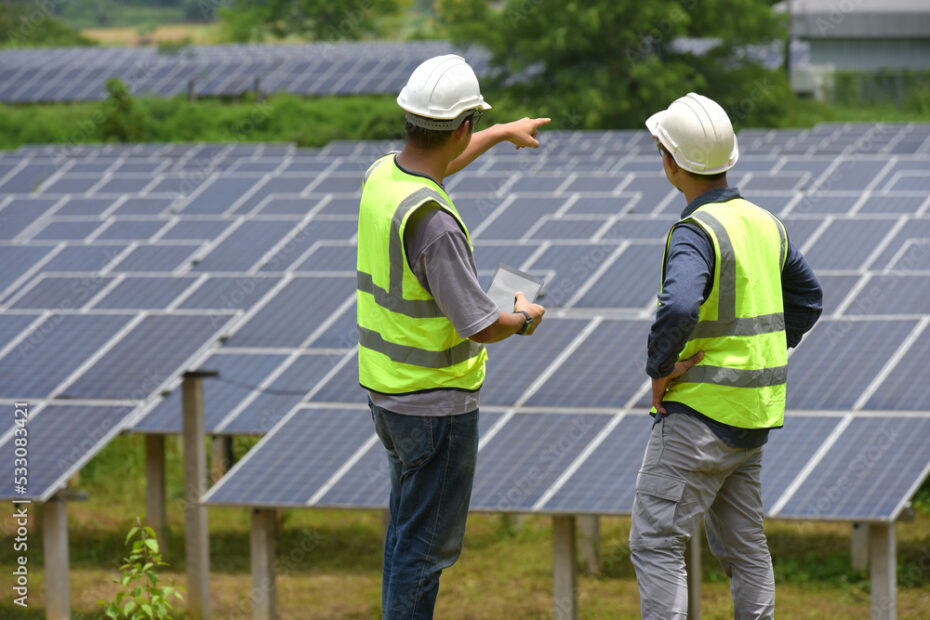A solar energy system collects sunlight and converts it into electricity that can be used immediately or stored for later use. In its simplest form, a solar system consists of solar panels, a charge controller, a battery, and an inverter. All these parts act together to make solar energy work. The following describes each part and how they work together to make electricity.
Solar Panels

The solar panels collect the sun’s energy and convert it into electricity. If it is hard to imagine how sunlight is converted into electricity, consider that a lightbulb does the opposite: convert electricity into light. It is not quite so simple that a solar panel is a reverse of a light bulb. But, when sunlight strikes carefully engineered materials, an electric voltage and current are produced. In short, the sun’s energy hits the solar cell and raises the energy level of the electrons in the photovoltaic cell. The cell configuration directs the electrons through the system circuits to work as they return to their original energy level. Understanding exactly how a solar panel makes electricity requires diving into physics and engineering. For more details and theory, click here.
Common Solar Panel Types
Presently, there are three main types of commercially viable solar panels: mono-crystal, multi-crystal, and thin film. Generally speaking, the mono-crystal panel is the most efficient at about 20%, followed by the multi-crystal and the thin film, which have efficiencies between 15% and 20%. The mono-crystal panels are more expensive than the multi-crystal panels, but they may be worth it. Flexible thin-film panels do not make as much electricity for their size or cost, but they are easier to mount and can conform to curved surfaces like an R/V roof or a boat bimini top.
New technologies for solar panels are being developed constantly, and the peak efficiency is increasing while the cost is moving down.
Watts and VOC and Such
Besides the overall efficiency, some other important solar panel measures help you evaluate, compare, and choose between them. Solar panels are rated in watts, ranging from about 100 watts for a small portable panel to 500 watts for a large rooftop unit. The watt rating is the nominal power output of the panel in the best sunlight and temperature conditions. The power output in watts, the volts times the amps, can vary widely depending on the amount of sunlight striking the panel.
A kilowatt(kW) equals one thousand watts. Larger solar energy systems are described in terms of how many kW they produce. For example, 4kW is a good starter size for a small off-grid house system.
Kilowatt-Hours
Let’s say the sun shines on this 4kW system for 4 hours. This would give us 4kW times 4 hours equals 4 kilowatt-hours(kWh). A kWh measures stored energy. Let’s say that you used a 1000-watt (1kW) space heater for 4 hours. That is 1kW times 4 hours equals
Besides watts, another important rating is the VOC or the open circuit voltage. This is the maximum voltage that the panel will produce. You must know the VOC to match your panel to a charge controller. If you put a d/c volt meter on the leads of an isolated solar panel in direct sunlight, the voltage you read is the VOC. When a current is flowing from the solar panel, the voltage drops. A typical voltage/current graph looks like this:

Just to clarify with an example, an open circuit happens when there is no current flowing but there is voltage. When the overhead light is off, the circuit is open, but there is still voltage at the switch contacts. Now, look at the chart again. At 43 volts or so, the current is zero, so 43 is the VOC. The lower left of the graph shows no voltage or current, as would be the case when no light is falling on the panel. For more information on solar panels, click here.
Charge Controller
The charge controller manages the power coming from the solar panel and sends it to the battery. It converts the variable voltage d/c power from the solar panels to a constant voltage that can safely charge the battery. The controller also knows the percent charge of the battery and knows to stop the incoming power when the battery is full. Solar panels and batteries come in many sizes and types and have different power profiles. A charge controller must be matched to the solar panels and the battery for safe and efficient operation. When using an a/c source such as house current to charge a battery, the charge controller needs an inverter to change the a/c power to d/c power. Click here to learn more about selecting a charge controller for your system.
Battery
Pick The Correct Battery for Solar Energy System
The charge controller sends electricity to the battery, which stores the electrical energy. The various types of batteries have characteristics that make them suitable for different applications. Your phone battery has a high energy density, so it is lighter but lasts for fewer charge/recharge cycles than heavier batteries.

In 2023, Lithium Phosphate batteries are some of the highest-performing types. Look at the chart: Lithium phosphate batteries have twice the life of other high-performing lithium batteries. They also have a higher specific peak current. These two characteristics make them ideal for power applications.
However, their specific energy, the power-to-weight ratio, is slightly more than half of the lithium cobalt batteries. The high power-to-weight of lithium cobalt batteries makes them ideal for building into portable electronic devices where the lower peak current is not a problem.
You need batteries to make solar energy work. If you want to learn more about choosing a battery, click here.
Inverter
The inverter takes direct current(d/c) power from the battery and changes it into alternating current(a/c) power to run your phone charger, appliances, and tools. Ensure your inverter is matched to the rest of the system and appropriately sized for the expected loads. The most important numbers for your inverter are the input voltage, the output voltage, and the wattage.
The inverter is set up to accept a specific d/c voltage input, usually 12, 24, or 48 volts. The a/c output should be the same as what runs your appliances; for example, in the US, 120 volts and 60 cycles per second. High-quality inverters have over and under and over-power protection on both the input and output. For more on selecting an inverter, click here.
The inverter and your whole solar power system need to be sized to the expected use and power loads. The daily power requirements of all the devices need to be added up. To learn how to make load calculations, click here.
Sine Wave, Modified Sine Wave, and Square Wave
Inverters come in three main flavors. The sine wave inverters are the most expensive. They make the cleanest power to run things like computers and other high-grade electronics. Square wave inverters are the cheapest and make dirty power that can damage delicate electronics. These devices are designed to run on clean a/c power, a pure sine wave. If you are not sure, check your equipment specs to see what kind of power it requires. The output of a dirty inverter can be cleaned up with an add-on power conditioner.
Inverters can draw from a battery or a string of solar panels. The short answer is that an off-grid solar system requires a battery to generate a/c power. Grid-connected systems can operate without a battery, but most go down when the grid goes down.
Big solar energy systems may use multiple inverters and charge controllers depending on the system design. Click here to learn more about PV system design, string inverters, microinverters, and power optimizers.
Combi Charge Controller/ Inverter/Battery
Chargers, inverters, and small batteries can be combined into a single portable unit. These devices have various names, such as solar generators or solar power packs. They have a battery built-in and connect a matched solar panel for charging. Most have outlets and USB ports and a/c outlets built into their cabinet. Jackery, Bluetti, Renogy.
In Conclusion
Keep it simple; To generate off-grid a/c, you need solar panels, a charge controller, a battery, and an inverter. The charger controller connects the panels and the battery, and the inverter is between the battery and your equipment. All the equipment has to be properly sized and matched to the load to make solar energy work.
For a first-time buyer, a solar energy kit is an easy way to ensure that all the parts will work together. The kits have discounts built-in compared to buying individual components. If you want to go DYI, or you have custom requirements, click here to learn how to spec out a solar power system.
Renogy Complete Solar Kits
Renogy makes good 200-watt and 400-watt off-grid starter systems. Check them out on Amazon.
